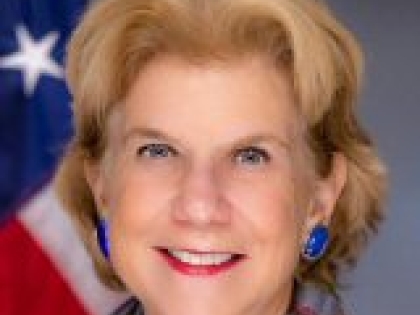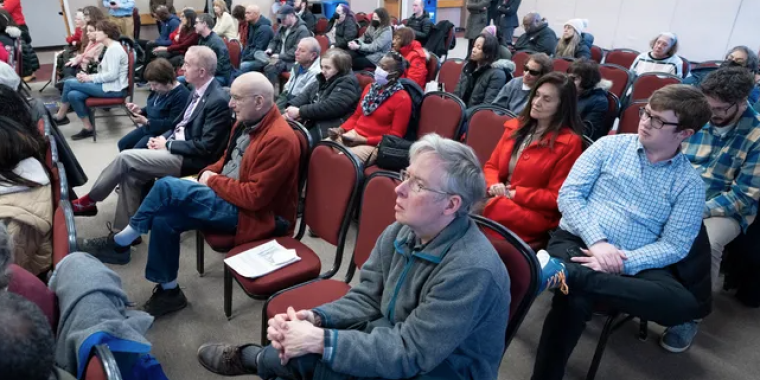
Electricity bills have many up in arms
Recent dramatic increases in some residents’ electricity bills have led to complaints, consternation, confusion, and a variety of reactions.
Local state legislators have vowed to take action in an attempt to rein-in utility rate increases, but those efforts do not address the current reality facing many utility customers.
It’s worth taking a step back to review the basics of how electricity is supplied and what costs are included in each bill.
Supply vs. delivery
A lot of confusion still stems from the state Public Service Commission’s deregulation of the energy industry in the late ‘90s. That effectively split apart power delivery from power supply, as the utility companies divested their power plants and customers were moved to energy service companies, or ESCOs, as their source of electricity supply. The utilities, such as NYSEG and Con Edison, kept their hold on specific geographic territories, but were now solely responsible for delivering the electricity — building and maintaining the infrastructure used to deliver power to homes and businesses.
Contributing to misunderstanding among many customers is the fact that under these state regulations, the utilities remained their single point of contact, sending out bills that included the total amount due each month, while listing all the elements in a somewhat tangled muddle of delivery charges, supply charges, surcharges, fees, taxes, and various other mysterious amounts. Combine that with most customers accepting the default supply option provided by their utility — i.e., “NYSEG Solutions” as the default supplier for NYSEG — rather than taking the time and effort to go out and find another ESCO, and many people simply think their utility is to blame for whatever price increases they see.
The original idea behind deregulation was to lower prices for consumers. But an unintended result was that, by having supply prices tied to market fluctuations, costs could go up or down. That was one of the motivations behind the subsequent development of Community Choice regulations, which allowed for the establishment of entities such as Westchester Power. By having multiple municipalities join together in a shared plan, it was hoped such an entity could negotiate longer-term contracts with ESCOs that would limit price fluctuations.
Of course, with world events affecting energy markets and making prices unpredictable, even longer-term contracts could not guarantee savings versus the default supply over the length of a contract. Bedford and Pound Ridge are still part of the Sustainable Westchester/Westchester Power consortium; Lewisboro voted to end its association with the group last year over frustration with the price per kilowatt-hour.
Fixed vs. variable cost
Under the current state framework, utilities must go before the PSC to have rate increases approved. Those rates, however, are strictly for the delivery portion of the bill. In recent years, NYSEG and Con Ed have faced increased pressure to upgrade their grids in the face of stronger and more frequent storms, and calls to improve their service and response times in the case of power outages. This has led them to ask for rate increases; at the same time, officials have often decried the amount of dividends paid to utility stockholders and salaries paid to executives.
But the price per kwh of supply is not regulated by the PSC; it depends on market forces. And, in the case of recent fluctuations, the customers most affected have been those signed up for the Day/Night rate plan.
As explained by NYSEG, Day/Night is an optional pricing option available to residential customers who qualify based on historical energy use, and the amount of use that can be shifted to nighttime hours. NYSEG says, “In general, only those customers who have considerable nighttime usage will benefit.”
In an email sent to residents March 12, Lewisboro Supervisor Tony Gonçalves explained, “Typically, homes and condos who have electric heat will have the Day/Night rate. This is usually found in the condo/townhouse developments in town such as Oakridge and The Meadows.”
He went on to say that NYSEG customers enrolled in Day/Night or Time of Use programs are experiencing higher electricity rates this winter “because market rates have gone up significantly and these plans are not hedged — that is, NYSEG does not lock-in pricing by purchasing power ahead of time. While customers can do well in these rate plans when markets are down (and if they can shift their electricity usage towards off-peak times), it leaves them directly exposed to spikes during periods when markets jump up.”
Max Weissman, a communication specialist for NYSEG, was on hand in Yorktown on Wednesday for two information sessions held by the utility that day. He confirmed that the Day/Night option uses daily market prices, which means changes in prices appear on bills immediately. For regular residential pricing of NYSEG’s default supply, the company “builds in market forecasting and purchasing to help buffer the fluctuations in electricity pricing.”
These differences in market and forecasted supply costs are then reconciled over several months.
“This means there are times of the year (think very cold winter months or hot summer months) where both the nighttime and daytime supply costs on the Day/Night pricing option could be higher than the regular residential pricing option,” he said.
What are the solutions?
NYSEG deployed customer service representatives to Yorktown and Mahopac for its two Lower Hudson Valley “community connection events” this week, to offer guidance and possible solutions to individual customers who are experiencing real economic distress as a result of sudden increases in their bills. For those who could not attend the events, they suggest going to the Brewster office at 35 Milan Road, Monday through Friday, from 9 a.m. to 3 p.m., or calling 800-572-1111 Monday through Friday, 7 a.m. to 7 p.m., for customer service.
Longer-term, state legislators are attempting to influence the PSC to hold the utilities to reasonable rate increases, though it is only Con Ed that has current requests in for such increases. Con Ed services part of Bedford, but not Pound Ridge or Lewisboro.
State Sen. Shelley Mayer represents Pound Ridge; the rest of her district is in Con Ed territory. She told The Recorder she has “been on the warpath about Con Ed’s rates for years,” and that they applied for a rate increase that was supposed to be for three years, and have now applied for a third increase. She said she has three bills that would limit the amount of rate increases, and is trying to build public pressure against the utilities, and trying to provide public pressure against the PSC.
“NYSEG is likely to be submitting a new increase proposal this year as well,” she said.
Chris Burdick, who represents Bedford, Lewisboro and Pound Ridge in the state Assembly, said he is “extremely concerned that the PSC is not exercising the authority they have to come up with equitable decisions as far as setting rates.”
He said Con Ed is enjoying record profits, and utility companies are earning nearly 13 percent per share. “If this isn’t corrected, we really have to take public ownership of our utilities,” Burdick said. “When the third quarter results came out, the financial press attributed it to recently approved rate increases.”
Both legislators noted that a lot of these rates are for hardening their existing infrastructure.
“It’s time for the shareholders to make these investments; it can’t all be on the backs of the ratepayers,” said Burdick. “People are really suffering.”
Mayer said the PSC has approved rates that are not sustainable for middle-income people, and most of the cost-saving programs that exist are only for low-income people. She encourages constituents to call the governor’s office at 518-474-8390 and to file a complaint with the PSC at https://dps.ny.gov/ or by calling 800-342-3377. She also noted the Public Utility Law Project offers information, assistance and advice on utility matters. PULP can be contacted at 877-669-2572 or emailed at info@utilityproject.org.


